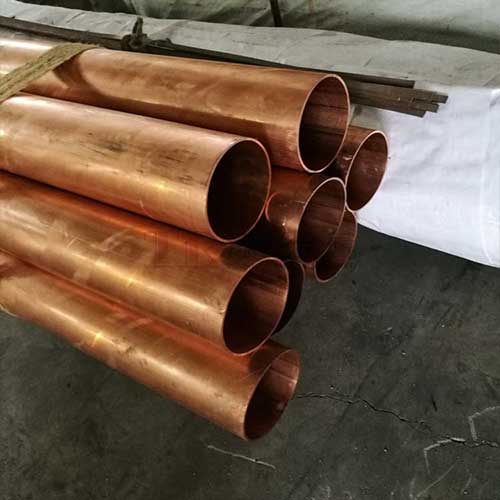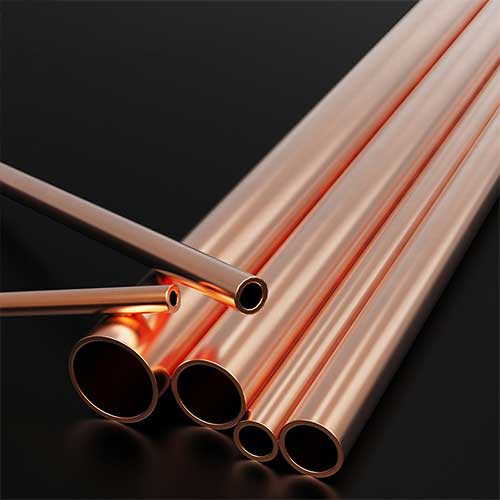Introduction
Copper pipes have long been favored in both residential and commercial plumbing for their durability and resistance to corrosion. However, when selecting copper pipes for a project, one of the most critical factors to consider is the pipe size. Copper pipe sizes directly affect water flow and pressure, influencing the efficiency of your plumbing system. Understanding how different copper pipe sizes impact these variables can help ensure that you choose the right pipes for your needs.
In this article, we will explore how copper pipe sizes affect water flow and pressure, the importance of selecting the correct size, and how this impacts the overall performance of plumbing systems.
What Are Copper Pipe Sizes?

Copper pipe sizes refer to the diameter of the pipe, both internally and externally. These sizes are typically measured in inches and fall into two categories: nominal pipe size and outside diameter. The nominal pipe size indicates the pipe’s approximate internal diameter, while the outside diameter (OD) measures the actual thickness of the pipe.
Common Types of Copper Pipes:
- Type K: Thick-walled, typically used in underground and commercial applications.
- Type L: Medium thickness, commonly used for residential plumbing.
- Type M: Thinner walls, suitable for less demanding plumbing applications like indoor water distribution.
Copper Pipe Size and Flow Rate
The size of copper pipes directly influences the rate of water flow through the pipe. Larger pipes allow more water to pass through, whereas smaller pipes restrict water flow. This flow rate is crucial for maintaining efficient water systems, especially in households or buildings with high water demands.
Table: Common Copper Pipe Sizes and Their Uses
| Copper Pipe Type | Nominal Pipe Size | Outside Diameter (OD) | Common Applications |
|---|---|---|---|
| Type K | ½ inch to 2 inches | 0.625 to 2.125 inches | Underground water service, high-pressure applications |
| Type L | ½ inch to 2 inches | 0.625 to 2.125 inches | General residential plumbing, above-ground applications |
| Type M | ½ inch to 2 inches | 0.625 to 2.125 inches | Indoor water distribution, low-pressure systems |
How Copper Pipe Sizes Impact Water Flow
The relationship between copper pipe sizes and water flow is straightforward: larger pipes can transport more water. Smaller pipes, by contrast, restrict the amount of water flowing through the system, which can result in reduced water pressure, especially when multiple taps or outlets are in use.
Larger Copper Pipes for Increased Flow
Larger diameter pipes allow for a higher volume of water to flow through with minimal resistance. This is essential in situations where high water demand is expected, such as in large households, commercial buildings, or irrigation systems. However, using overly large pipes can lead to excessive water waste if not needed for the application.
Smaller Copper Pipes for Precision
On the other hand, smaller pipes provide more control over water distribution, making them ideal for specific tasks like connecting to appliances that don’t require high water pressure, such as dishwashers or ice machines. However, using pipes that are too small can lead to significant drops in water pressure, especially when water is being used simultaneously in multiple areas.
The Effect of Copper Pipe Sizes on Water Pressure
Water pressure refers to the force that drives water through the plumbing system. The size of copper pipes plays a critical role in determining the pressure at which water flows. If the pipes are too small for the required flow rate, the pressure will drop significantly, leading to slow water output from taps or showers.
How Pressure Loss Occurs in Small Pipes
Smaller pipes increase the friction between the water and the pipe walls. This friction slows down the water, resulting in a loss of pressure as it travels through the system. This is particularly noticeable in longer plumbing runs or when multiple fixtures are used simultaneously.
Larger Pipes and Consistent Water Pressure
Larger pipes reduce friction and allow water to flow more freely, preserving pressure over longer distances. This is why it’s important to choose the right copper pipe size for your specific application. If your plumbing system has long runs or multiple branches, larger pipes are often recommended to maintain adequate water pressure at all outlets.
Choosing the Right Copper Pipe Sizes for Your Plumbing System

Selecting the appropriate copper pipe sizes for your plumbing system is crucial to achieving both optimal water flow and pressure. Several factors should be considered when choosing the right size, including:
Water Demand: High-demand systems, such as multi-story homes or buildings with multiple bathrooms, require larger pipes to ensure consistent water flow and pressure.
Length of Plumbing Run: Longer runs typically require larger pipes to prevent pressure loss. Shorter runs can use smaller pipes without affecting performance.
Type of Application: The specific use of the pipes will dictate the size. For example, pipes supplying water to a sprinkler system or irrigation network may need to be larger than those supplying a kitchen sink.
Compatibility with Fixtures: Ensure the copper pipe sizes you choose are compatible with the fixtures in your plumbing system. For instance, certain appliances may require specific pipe sizes to operate efficiently.
Table: Recommended Copper Pipe Sizes Based on Water Demand
| Application | Suggested Pipe Size (Nominal) | Recommended Type |
|---|---|---|
| Single-family home | ¾ inch to 1 inch | Type L |
| Large residential system | 1 inch to 1½ inches | Type L |
| Commercial building | 1 inch to 2 inches | Type K |
| Irrigation system | ¾ inch to 1½ inches | Type K |
Conclusion
Understanding how copper pipe sizes affect water flow and pressure is essential for designing an efficient plumbing system. Whether you’re working on a small residential project or a large commercial installation, selecting the right size of copper pipes ensures that your system will function optimally, delivering the necessary water flow and pressure without compromising performance. Choosing the wrong size can lead to issues like pressure loss, inefficient water distribution, and increased energy costs.
By considering factors like water demand, pipe length, and the type of application, you can make informed decisions about which copper pipe sizes are best suited for your needs. Ensuring proper pipe size selection will not only enhance the performance of your plumbing system but also extend its longevity.
FAQ
How do I determine the correct copper pipe size for my plumbing system?
To determine the correct copper pipe size, consider factors such as the water demand, the length of the plumbing run, and the specific application. A plumbing professional can also help recommend the appropriate size based on your system’s requirements.
Can smaller copper pipes handle high water pressure?
While smaller copper pipes can handle higher water pressure initially, they tend to lose pressure more quickly over longer distances due to increased friction. For high-pressure applications, it’s better to use larger pipes to ensure consistent pressure throughout the system.
What are the most common copper pipe sizes used in residential plumbing?
In residential plumbing, the most common copper pipe sizes are ½ inch and ¾ inch nominal sizes. These sizes provide sufficient water flow and pressure for typical household needs.
How does pipe size affect energy costs in plumbing systems?
Using pipes that are too small can lead to pressure loss, requiring pumps or additional energy to maintain sufficient water pressure. Larger pipes reduce friction, making the system more energy-efficient in the long run.
Can I mix different copper pipe sizes in one plumbing system?
Yes, you can mix different copper pipe sizes in a single plumbing system, as long as the size changes are appropriate for the intended water flow and pressure requirements. However, transitions between sizes should be done carefully to avoid pressure imbalances.





